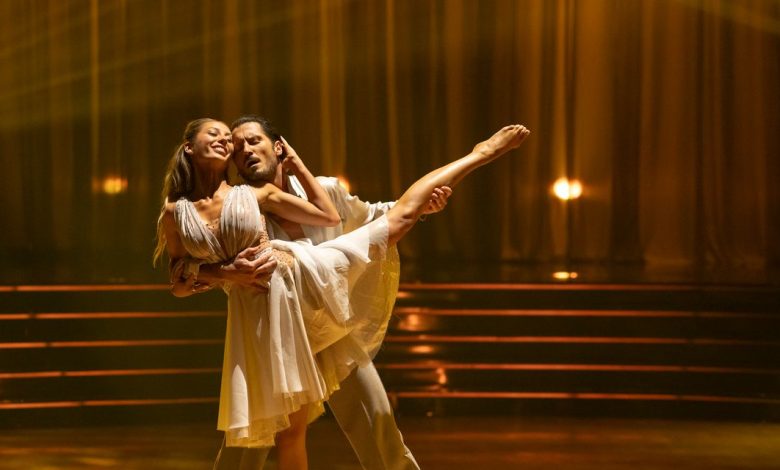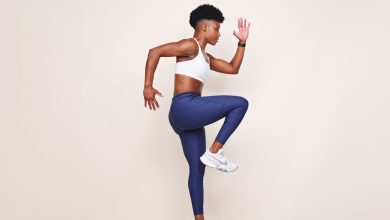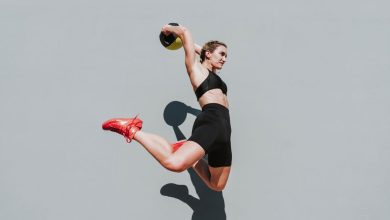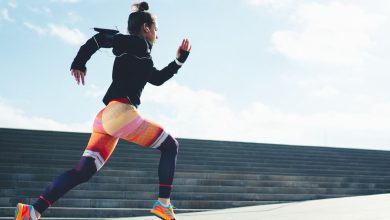5 Muscle Recovery Moves From the Long-Time Physical Therapist of Dancing With the Stars

The cast of Dancing With the Stars may make the cha-cha, foxtrot, and samba look effortless on screen, but they put in work behind the scenes. Sure, hours of rehearsals are part of the equation, but according to the show’s long-time physical therapist Gina Minchella, DPT, the stars’ recovery routine is just as instrumental in helping them take the spotlight week after week.
After all, injuries on DWTS can hinder performance (like they did this season with season 34 celeb dancers Alix Earle and Danielle Fishel), so Dr. Minchella has a playbook for keeping the crew healthy. “My approach is very preventative. It’s really taking on a lot of techniques that help prevent injuries,” Dr. Minchella tells SELF.
Over the last 13 years with DWTS , she has built a team of physical therapists who support the cast (both pros and celebs) throughout the season and the Dancing With the Stars Tour. Together, they design individualized and highly specific recovery routines depending on each dancer’s body.
Here’s how she keeps the team going during grueling workouts—and advice to incorporate her tips into your routine.
1. Focus on active recovery.
The cast of DWTS asks a lot of a few muscle groups—namely, the hips, lower back, and hamstrings. So, when Dr. Minchella programs an active recovery or stretching routine for the dancers, she tailors her recommendations with a special focus on the piriformis.
“The piriformis is always a culprit for hip pain and low back pain,” she explains, referring to a small muscle located deep in the glutes. A too-tight piriformis stresses the sciatic nerve, which runs from the base of your spine all the way down your leg.
To keep the piriformis loose, Dr. Minchella recommends two hip stretches: pigeon pose or figure four pose. A low lunge to stretch out the hip flexors is also a great option for the dancers, she adds. “I will actually manually stretch them by letting [the dancer’s] leg kind of hang off the table,” she explains.
The takeaway for dancers and non-dancers alike? Identify the key muscles you use for your workouts, and make sure to give them plenty of love. If you’re a rock climber, you may want to focus on your upper back, hamstrings, and forearms, for example. And runners may want to give love to their hamstrings, quadriceps, and glutes.
2. Treat your warm-up like part of your recovery.
Dr. Minchella considers warm-up routines to be an essential part of recovery. “They’re preparing their muscles and joints for handling whatever they’re taking on. Then the recovery period is even easier, and even more beneficial.”
The DWTS physical therapist says she’s partial to foam rolling, light cardio, and stretching to kick-start blood flow in the lower body.
3. Embrace ice.
Even before cryotherapy became mainstream, Dr. Minchella was recommending cold plunges and icing to all of her clients. Why? Your favorite workout causes your blood vessels to widen (vasodilate). Icing muscles after your cool-down prompts your blood vessels to constrict (vasoconstrict), which may help expedite recovery.
Whether you’re plunging (or taking a cold shower) at home, it’s important not to turn down the temperature too much. “The optimal temperature for an ice bath is somewhere between 50 and 68 degrees. And you really don’t want to go below that, because then you’re getting into tissue damage,” explains Dr. Minchella.
4. Try a compression garment.
“The other thing that I usually have the dancers do is use a lot of compression garments, like compression boots for the legs,” says. Dr. Minchella. “Again, that helps with blood flow.” This may help the dancers’ hips, hamstrings, calves, and feet recover more quickly. Plus, it just feels good after spending a day perfecting choreography.
While the high-tech compression boots can be costly, products like compression socks or leggings can give you a taste of what it feels like to slip into these futuristic boots for a fraction of the cost.
5. Hydrate throughout the day.
Dr. Minchella adds that it’s not enough for the dancers to simply hydrate before and after a workout. “Hydration during [a workout] is super important,” she explains. And so is hydrating well throughout the day “to keep those muscles lubricated and fluid,” she says.
The bottom line is: respect the recovery process. It’s essential for leveling up your movement.
Related:



